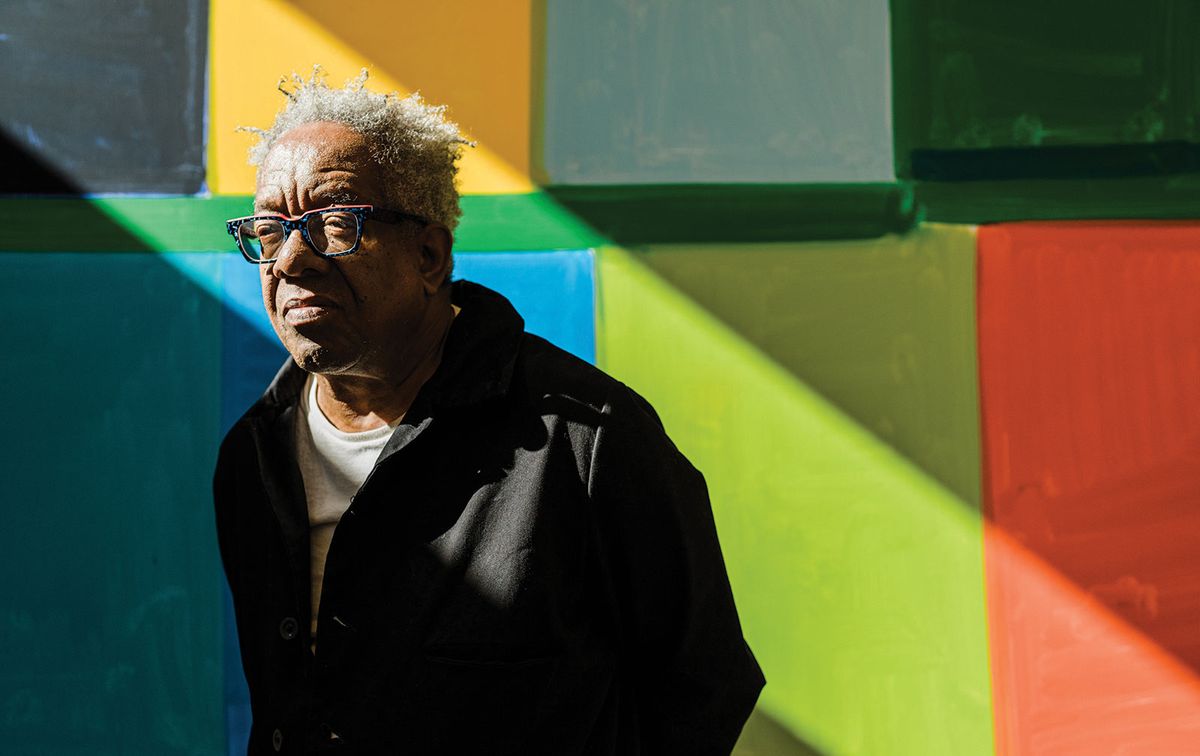Stanley Whitney had his eureka moment during a visit to Volterra’s National Etruscan Museum. Gazing at stacked ancient funeral urns, he realised that by arranging blocks of colour in a similar way he could make his brilliant canvases pulsate, dance and burst with life. “I was trying to figure out how to place colour at the centre of things,” Whitney, 76, recalls of his time in Italy. “I’d been looking at everything and learning a lot, from the floor tiles to the Pantheon to the Colosseum. Then it just came to me, like an epiphany.”
The five-year experience of living in Rome in the 1990s transformed his approach. Many of the artist’s abiding influences—quilt-making, improvisational jazz and the paintings of Jackson Pollock and Mark Rothko—derive from his native United States. But the culture and lifestyle he encountered in Italy shaped his work in less obvious ways. Now, in Venice, the spotlight will fall on Whitney’s formative Italian years, with the first exhibition exclusively dedicated to his Rome period and more recent paintings made in Parma.
Unseen works
The show at the Palazzo Tiepolo Passi, a lavish 16th-century site along the Grand Canal, will include around 16 large paintings, more than 30 smaller works and roughly 15 works on paper. Many of them have never been displayed before. (“I put a lot in storage when I got back to America, because for a long time my pieces weren’t being shown,” Whitney explains.) Presented by the Buffalo AKG Art Museum, the show will provide a tantalising taste of things to come in a larger retrospective survey of Whitney’s career planned for the upstate New York museum, which is still under construction, in 2024.
It got to the point when I realised it really didn’t make much sense to be in AmericaStanley Whitney
Whitney’s flourish in Italy followed many years of graft in the US. Born near Philadelphia, the artist got his MFA from Yale in 1972 and moved to New York City, commuting weekly to Philadelphia to teach at the Tyler School of Art and Architecture from the following year. While “New York was the centre of my world”, Whitney says, he struggled to make progress there, managing only one solo exhibition between 1972 and 1989. “Black artists weren’t getting much play. We were showing here and there or in alternative places. It got to the point when I realised it really didn’t make much sense for me to be in America.”
He jumped at an opportunity to move to Rome with his wife through the school in 1992. While there, the natural light, the classical architecture and the richly coloured buildings of the Italian capital began to shape his work. Being away from the cut and thrust of New York’s art scene gave him space to reflect on his approach, while travelling extensively with friends—around Italy, to London and Paris, and all over the Mediterranean as far as Egypt—provided additional stimuli. “I knew I didn’t want to paint like de Kooning,” Whitney recalls. “I was working hard mentally and physically and a lot came together. It’s really where I was at in my life.”

Whitney’s Return to the Garden Again by the Back Way (2004), one of his paintings inspired by Italy © Stanley Whitney; Courtesy of Lisson Gallery
The artist gradually abandoned his earlier “gestural” style characterised by squiggles and colourful patches surrounded by empty space, inspired by the expansive territories he had encountered in the US and Mexico. Instead, he conceived denser, more tightly structured works invested with the energy and rhythm for which he is now famed. These qualities can be seen in the brightly coloured The Awakening of Memory(1996) and the more subdued Wonder Garden (2006), which are both being shown in Venice.
Today, Whitney splits his time between New York and his studio near Parma in Emilia-Romagna, where he has worked during the summer months for the last three decades. Having his pieces shown in Venice, where he has visited the Biennale since the 1980s, signifies a long-awaited point of arrival.
“I’ve done the work, and I’m not dead, so I can really appreciate the recognition as that magical city is coming back to life,” he says. “I just feel incredibly lucky being able to enjoy it.”
• Stanley Whitney, Palazzo Tiepolo Passi, 23 April-27 November


